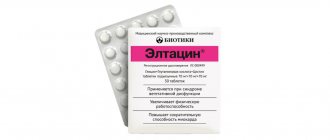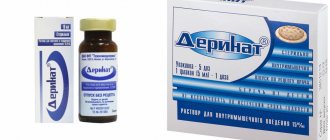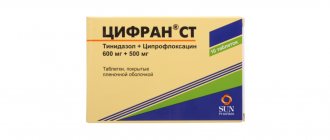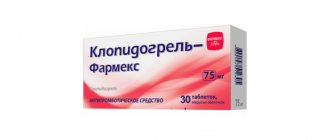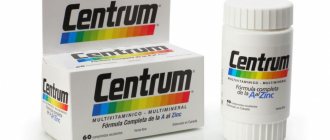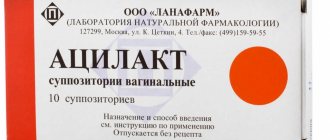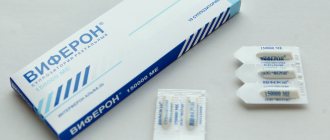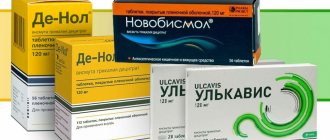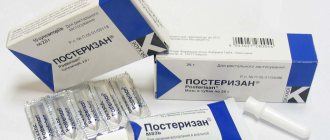Diclofenac suppositories are one of the most convenient forms of the drug, which, unlike tablets and injections, has virtually no side effects. They are administered rectally 2-3 times a day. The drug quickly eliminates pain and inhibits inflammatory processes. Admission is allowed to adults and children over 6 years old.
Suppositories with diclofenac: description
The drug is a rectal suppository that contains the substance of the same name - diclofenac sodium at a concentration of 50 or 100 mg per 1 suppository. The medicine belongs to the non-steroidal anti-inflammatory drugs group. It also has analgesic and antipyretic effects.
Diclofenac sodium suppresses the synthesis of lipids, which provoke inflammation and pain. Absorbed quite quickly and completely absorbed. The product is also available in the form of tablets, gel, ointment, eye drops, and injections for intramuscular administration.
It is recommended to store rectal suppositories in the refrigerator or at room temperature no more than 25 degrees. The place should be protected from direct sunlight. Access for children is excluded. Candles can only be taken within the expiration date, which is 2 years from the date of production.
ENZYME
DICLOFENAC rectal suppositories 50 mg and 100 mg
Trade name: Diclofenac
International nonproprietary name (INN): diclofenac
Dosage form: rectal suppositories
Composition: one suppository contains -
active substance: sodium diclofenac - 0.05 g; 0.1 g
excipients: solid fat - 1.2 g; 1.85 g
DESCRIPTION:
Suppositories are white or white with a yellowish tint, torpedo-shaped. On a longitudinal section there is a homogeneous mass without foreign inclusions. An air rod or funnel-shaped recess may be present. Pharmacotherapeutic group:
Non-steroidal anti-inflammatory drug (NSAID).
ATX code : М01АВ05
PHARMACOLOGICAL PROPERTIES
Pharmacodynamics:
Diclofenac has anti-inflammatory, analgesic and antipyretic effects. By indiscriminately inhibiting cyclooxygenase 1 and 2, it disrupts the metabolism of arachidonic acid and reduces the amount of prostaglandins at the site of inflammation. In rheumatic diseases, the anti-inflammatory and analgesic effect of diclofenac helps to significantly reduce the severity of pain, morning stiffness, and swelling of the joints, which improves the functional state of the joint. For injuries, in the postoperative period, diclofenac reduces pain and inflammatory swelling.
Pharmacokinetics:
When administered rectally, the maximum plasma concentration of 1.2 mcg/ml is created after 40-60 minutes. and is linearly dependent on the dose used. No changes in the pharmacokinetics of diclofenac are observed during repeated administration and do not accumulate.
Communication with plasma proteins is more than 99% (most of it is associated with albumin). Penetrates into synovial fluid. The maximum concentration in synovial fluid is observed 2-4 hours later than in plasma. The half-life from synovial fluid is 3-6 hours (the concentration of the active substance in synovial fluid 4-6 hours after administration of the drug is higher than in plasma, and remains higher for another 12 hours). The relationship between the concentration of the drug in the synovial fluid and the clinical effectiveness of the drug has not been clarified.
50% of the active substance is metabolized during the “first pass” through the liver. Metabolism occurs as a result of multiple or single hydroxylation and conjugation with glucuronic acid. The enzyme system P450 CYP2C9 takes part in the metabolism of the drug. The pharmacological activity of the metabolites is lower than that of diclofenac.
Systemic clearance is 350 ml/min, volume of distribution is 550 ml/kg. Plasma half-life -2 hours. 65% of the administered dose is excreted in the form of metabolites
kidneys; 1% is excreted unchanged, the rest of the dose is excreted in the form of metabolites in bile.
In patients with severe renal failure (creatinine clearance less than 10 ml/min), the excretion of metabolites in bile increases, but no increase in their concentration in the blood is observed.
In patients with chronic hepatitis or compensated liver cirrhosis, the pharmacokinetic parameters of diclofenac do not change.
Diclofenac passes into breast milk.
INDICATIONS FOR USE:
The drug is intended for symptomatic therapy, reducing pain and inflammation at the time of use, and does not affect the progression of the disease.
Diseases of the musculoskeletal system:
- rheumatoid arthritis,
- psoriatic, juvenile chronic arthritis,
- ankylosing spondylitis,
- gouty arthritis,
- rheumatic soft tissue lesions,
- osteoarthritis of peripheral joints and spine, including radicular syndrome,
- tenosynovitis,
- bursitis.
Pain syndrome of mild or moderate severity:
- neuralgia,
- myalgia,
- sciatica,
- post-traumatic pain syndrome accompanied by inflammation,
- postoperative pain,
- headache,
- migraine,
- algodismenorrhea,
- adnexitis,
- toothache.
As part of complex therapy for infectious and inflammatory diseases of the ear, nose and throat with severe pain (pharyngitis, tonsillitis, otitis media).
Use strictly as prescribed by your doctor.
CONTRAINDICATIONS AND SIDE EFFECTS:
- hypersensitivity (including to other NSAIDs);
- complete or incomplete combination of bronchial asthma, recurrent polyposis of the nasal mucosa and paranasal sinuses and intolerance to acetylsalicylic acid or other non-steroidal anti-inflammatory drugs (including a history);
- erosive and ulcerative lesions of the gastric or duodenal mucosa, active gastrointestinal bleeding;
- inflammatory bowel diseases (ulcerative colitis, Crohn's disease) in the acute phase;
- period after coronary artery bypass grafting;
- decompensated heart failure;
- severe liver failure or active liver disease;
- severe renal failure (creatinine clearance less than 30 ml/min), progressive kidney disease;
- confirmed hyperkalemia;
- hemostasis disorders (including hemophilia);
- III trimester of pregnancy;
- lactation period;
- children's age (up to 18 years - for suppositories of 100 mg; up to 15 years - for suppositories of 50 mg);
- rectal bleeding, hemorrhoids, trauma or inflammation of the rectum.
Carefully:
- cerebrovascular diseases,
- anemia,
- bronchial asthma,
- cardiac ischemia,
- chronic heart failure,
- congestive heart failure,
- peripheral arterial diseases,
- arterial hypertension,
- edema syndrome,
- liver and kidney failure (creatinine clearance less than 30-60 ml/min),
- dyslipidemia/hyperlipidemia,
- inducible porphyria,
- smoking,
- alcoholism,
- inflammatory bowel diseases,
- anamnestic data on the development of peptic ulcer disease of the gastrointestinal tract, the presence of Helicobacter pylori infection,
- diabetes,
- condition after extensive surgical interventions,
- diverticulitis,
- systemic connective tissue diseases.
- severe somatic diseases,
- pregnancy I-II trimester,
- elderly age,
- long-term use of NSAIDs,
- simultaneous use of glucocorticosteroids (for example, prednisolone), anticoagulants (for example, warfarin), antiplatelet agents (for example, acetylsalicylic acid, clopidogrel), selective serotonin reuptake inhibitors (for example, citalopram, fluoxetine, paroxetine, sertraline).
.
Side effect:
Frequency of all side effects:
- often - 1-10%;
- sometimes - 0.1 -1.0%;
- rarely - 0.01-0.1%;
- very rarely - less than 0.001%, including isolated cases.
From the digestive system:
- often - epigastric pain, nausea, vomiting, diarrhea, dyspepsia, flatulence, anorexia, increased aminotransferase activity;
- rarely - gastritis, proctitis, bleeding from the gastrointestinal tract (vomiting with blood, melena, diarrhea mixed with blood), gastrointestinal ulcers (with or without bleeding or perforation), hepatitis, jaundice, impaired liver function;
- very rarely - stomatitis, glossitis, esophagitis, nonspecific hemorrhagic colitis, exacerbation of ulcerative colitis or Crohn's disease, constipation, pancreatitis, fulminant hepatitis, exacerbation of hemorrhoids.
From the nervous system:
- often - headache, dizziness;
- rarely - drowsiness;
- very rarely - sensory disturbances (including paresthesia), memory disorders, tremors, convulsions, anxiety, cerebrovascular disorders, aseptic meningitis, disorientation, depression, insomnia, nightmares, irritability, mental disorders.
From the senses:
- often - vertigo;
- very rarely - visual impairment (blurred vision, diplopia), hearing impairment, tinnitus, impaired taste.
From the urinary system:
- very rarely - acute renal failure, hematuria, proteinuria, interstitial nephritis, nephrotic syndrome, papillary necrosis.
From the hematopoietic organs:
- very rarely - thrombocytopenia, leukopenia, hemolytic and aplastic anemia, agranulocytosis.
Allergic reactions:
- rarely - anaphylactic/anaphylactoid reactions, including a marked decrease in blood pressure (BP) and shock;
- very rarely - angioedema (including the face).
From the cardiovascular system (CVS):
- very rarely - palpitations, chest pain, increased blood pressure, vasculitis, heart failure (HF), myocardial infarction.
From the respiratory system:
- rarely - bronchial asthma (including shortness of breath);
- very rarely - pneumonitis.
From the skin:
- often - skin rash;
- rarely - urticaria;
- very rarely - bullous rashes, erythema, incl. multiforme, and Stevens-Johnson syndrome, Lyell's syndrome, exfoliative dermatitis, itching, hair loss, photosensitivity, purpura, incl. allergic.
Other:
- rarely - swelling.
Special instructions:
During the period of treatment with the drug, monitoring of the peripheral blood picture, liver and kidney function, and examination of stool for the presence of blood should be carried out. If, while taking the drug, the increase in the activity of “liver” transaminases persists or increases, if clinical symptoms of hepatotoxicity are noted (including nausea, fatigue, drowsiness, diarrhea, itching, jaundice), treatment should be discontinued.
Because of the important role of prostaglandins in maintaining renal blood flow, special caution should be exercised when prescribing to patients with cardiac or renal insufficiency, as well as when treating the elderly, taking diuretics, AND patients who have a decrease in circulating blood volume for any reason (eg , after extensive surgery). If diclofenac is prescribed in such cases, monitoring of renal function is recommended as a precaution. In patients with liver failure (chronic hepatitis, compensated cirrhosis of the liver), the kinetics and metabolism do not differ from similar processes in patients with normal liver function. When carrying out long-term therapy, it is necessary to monitor liver function, peripheral blood patterns, and stool analysis for occult blood. Due to the negative effect on fertility, the drug is not recommended for women wishing to become pregnant. In patients with infertility (including those undergoing examination), it is recommended to discontinue the drug. To reduce the risk of developing adverse events from the gastrointestinal tract, the minimum effective dose should be used for the shortest possible course. Patients taking the drug must refrain from drinking alcohol.
Use during pregnancy and lactation:
The use of diclofenac is contraindicated in the third trimester of pregnancy (possible suppression of uterine contractility and premature closure of the ductus arteriosus in the fetus), and in the first and second trimester its use is possible only in cases where the expected benefit to the mother outweighs the potential risk to the fetus. The drug is prescribed in the minimum effective dose.
Diclofenac and its decomposition products pass into breast milk in small quantities. If it is necessary to use the drug in high doses and for a long time, you should consider stopping breastfeeding.
Impact on the ability to drive vehicles and machinery:
During the treatment period, the speed of mental and motor reactions may decrease, so it is necessary to refrain from driving vehicles and engaging in other potentially hazardous activities that require increased concentration and speed of psychomotor reactions.
METHOD OF APPLICATION AND DOSAGE:
Rectally. Before using the suppository, it is recommended to empty the intestines.
Suppositories 100 mg: adults: 1 suppository 1 time per day.
Suppositories 50 mg: adults and children over 15 years of age. 1 suppository 2 times a day. The maximum daily dose is 150 mg.
When used simultaneously with oral forms of diclofenac, it is rational to use a single dose of 100 mg at night (in this case, evening administration of oral forms of diclofenac is excluded).
The duration of use of the drug is no more than 7 days.
Use during pregnancy and lactation:
The use of diclofenac is contraindicated in the third trimester of pregnancy (possible suppression of uterine contractility and premature closure of the ductus arteriosus in the fetus), and in the first and second trimester its use is possible only in cases where the expected benefit to the mother outweighs the potential risk to the fetus. The drug is prescribed in the minimum effective dose.
Diclofenac and its decomposition products pass into breast milk in small quantities. If it is necessary to use the drug in high doses and for a long time, you should consider stopping breastfeeding.
Overdose:
Symptoms:
- vomit,
- bleeding from the gastrointestinal tract,
- epigastric pain,
- diarrhea,
- dizziness,
- noise in ears,
- lethargy,
- convulsions,
- rarely - increased blood pressure (BP), acute renal failure, hepatotoxicity, respiratory depression, coma.
Treatment:
symptomatic therapy aimed at eliminating increased blood pressure, renal dysfunction, seizures, gastrointestinal irritation, respiratory depression; in case of erroneous oral use of suppositories, gastric lavage and activated charcoal are recommended. Forced diuresis and hemodialysis are ineffective (due to the significant connection with proteins and intensive metabolism).
INTERACTIONS WITH OTHER MEDICINES:
Increases plasma concentrations of digoxin, methotrexate, lithium and cyclosporine.
Reduces the effect of diuretics; against the background of potassium-sparing diuretics, the risk of hyperkalemia increases; against the background of anticoagulants, thrombolytic agents (alteplase, streptokinase, urokinase) - the risk of bleeding (usually from the gastrointestinal tract). Reduces the effects of antihypertensive and hypnotic drugs.
Cefamandole, cefoperazone, cefotetan, valproic acid and plicamycin increase the incidence of hypoprothrombinemia.
Cyclosporine and gold preparations increase the effect of diclofenac on the synthesis of prostaglandins in the kidneys, which increases nephrotoxicity.
Simultaneous administration with ethanol, colchicine, corticotropin and St. John's wort preparations increases the risk of bleeding in the gastrointestinal tract.
Diclofenac enhances the effect of drugs that cause photosensitivity.
Drugs that block tubular secretion increase the plasma concentration of diclofenac, thereby increasing its toxicity.
Concomitant use with paracetamol increases the risk of developing nephrotoxic effects of diclofenac.
Increases the likelihood of side effects of other NSAIDs and glucocorticosteroids (gastrointestinal bleeding), methotrexate toxicity and cyclosporine nephrotoxicity.
Acetylsalicylic acid reduces the concentration of diclofenac in the blood. Reduces the effect of hypoglycemic drugs.
RELEASE FORM:
Rectal suppositories 50 mg, 100 mg.
5 suppositories per blister pack made of polyvinyl chloride film. 2 blister packs along with instructions for use in a cardboard pack.
CONDITIONS FOR DISCHARGE FROM PHARMACIES:
Dispensed by prescription.
BEST BEFORE DATE:
2 years. Do not use after expiration date.
STORAGE AND TRANSPORTATION:
In a dry place, protected from light, at a temperature not exceeding 25 ° C.
Keep out of the reach of children.
Indications for use
Diclofenac suppositories are used to relieve pain and prevent inflammatory processes in the presence of the following pathologies:
- osteochondrosis;
- osteoarthritis;
- rheumatism;
- arthritis;
- spondyloarthritis;
- sciatica;
- migraine;
- lovemago;
- gout;
- algodismenorrhea;
- complications after injuries;
- complications after operations;
- ENT diseases (for example, laryngitis, otitis media).
Typically, the drug is taken in the form of tablets or ointments. But if oral administration is not possible (for example, in a weakened patient), the doctor prescribes rectal suppositories. This form of therapy has several advantages:
- the gastric mucosa is not damaged;
- the likelihood of developing muscle necrosis decreases;
- no suppuration forms at the injection site;
- more comfortable administration compared to injection.
Suppositories are used in combination treatment. For example, during the day the patient takes pills or receives an injection. At night, for a better therapeutic effect, suppositories are administered.
Suppositories are also used to treat prostatitis. In this case, the active substance does not enter the liver, but almost 100% goes to the affected prostate cells, which improves treatment results.
Another direction is in gynecology. Suppositories are placed in case of acute pain caused by inflammation of the ovaries or algomenorrhea. In this case, suppositories are inserted into the vagina, they dissolve quite quickly and actively affect the affected tissue.
Contraindications and side effects
Suppositories and other forms of the drug are not used when the patient has certain contraindications:
- individual intolerance to diclofenac or auxiliary components;
- proctitis;
- severe disorders of the kidneys, liver, heart.
Taking suppositories has virtually no contraindications, since the medicine is administered externally, without entering the stomach and other organs of the gastrointestinal tract. Therefore, this form of the drug, along with ointments and gel, can be considered the safest. Suppositories have practically no side effects. If the dosage is observed, they do not pose a health threat.
Diclofenac-altfarm suppositories 100 mg 10 pcs
Often – 1-10%; sometimes – 0.1-1%; rarely - 0.01-0.1%; very rarely - less than 0.01%, including isolated cases. From the digestive system: often - nausea, vomiting, diarrhea, dyspepsia, flatulence, anorexia, increased aminotransferase activity; rarely - gastritis, proctitis, gastrointestinal bleeding, gastrointestinal ulcers (with or without bleeding or perforation), hepatitis, jaundice, liver dysfunction; very rarely - stomatitis, glossitis, diaphragm-like intestinal strictures (nonspecific hemorrhagic colitis, exacerbation of ulcerative colitis or Crohn's disease), constipation, pancreatitis, fulminant hepatitis, exacerbation of hemorrhoids.
From the nervous system: often – headache, dizziness; rarely - drowsiness; very rarely - sensory disturbance, incl. paresthesia, memory disorders, tremor, convulsions, anxiety, cerebrovascular disorders, aseptic meningitis, disorientation, depression, insomnia, nightmares, irritability, mental disorders.
From the senses: often – vertigo; very rarely - visual impairment (blurred vision, diplopia), hearing impairment, tinnitus, impaired sense of taste.
From the urinary system: often - fluid retention; very rarely - acute renal failure, hematuria, proteinuria, interstitial nephritis, nephrotic syndrome, papillary necrosis, oliguria, azotemia.
From the hematopoietic organs: very rarely - thrombocytopenia, leukopenia, hemolytic and aplastic anemia, agranulocytosis, eosinophilia, thrombocytopenic purpura, worsening of infectious processes (development of necrotizing fasciitis).
Allergic reactions: anaphylactic/anaphylactoid reactions, including a marked decrease in blood pressure and shock; very rarely – angioedema (including of the face).
From the cardiovascular system: very rarely - palpitations, chest pain, increased blood pressure, vasculitis, heart failure, myocardial infarction.
From the respiratory system: rarely - cough, bronchospasm, bronchial asthma (including shortness of breath); very rarely - laryngeal edema, pneumonitis.
From the skin: often – skin rash; rarely - urticaria; very rarely - bullous rashes, eczema, incl. multiforme and Stevens-Johnson syndrome, Lyell's syndrome, toxic dermatitis, itching, hair loss, photosensitivity, purpura, incl. allergic, pinpoint hemorrhages.
Instructions for use of Diclofenac suppositories
Suppositories are administered rectally (into the anus), starting with a daily dosage of 50-150 mg (for an adult). The maximum amount is 150 mg per 24 hours. It must be divided into 2 or 3 doses (1 candle each).
Children from 6 to 15 years old inclusive determine the daily dosage based on the ratio of 0.2-2 mg of active substance per 1 kg of body weight. If a child is diagnosed with rheumatoid arthritis, the maximum daily amount may be 3 mg per 1 kg of body weight.
